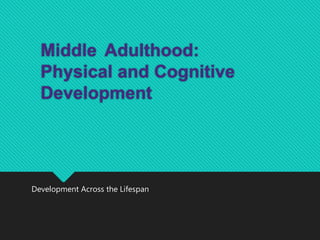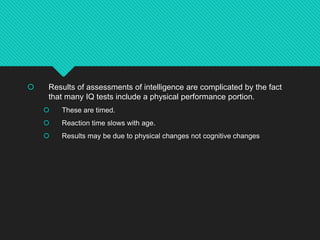Middle adulthood brings physical changes like gradual weight gain and loss of strength and senses. Women experience menopause around age 50 which can cause hot flashes and night sweats. Health concerns increase as risks for diseases like arthritis, diabetes, and hypertension rise. Stress remains a factor in health. Overall, health risks are lower than younger ages if healthy habits are maintained.

































































